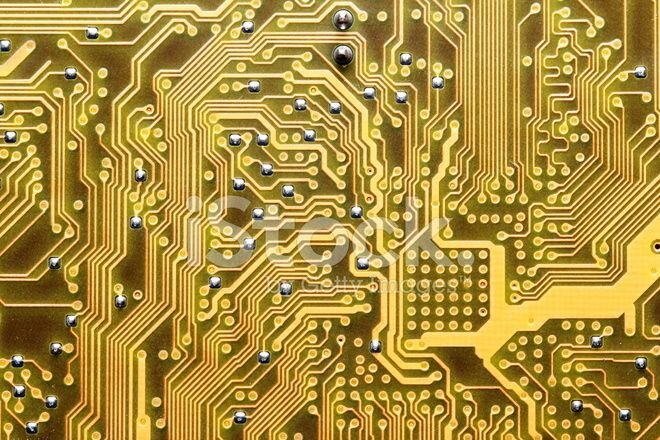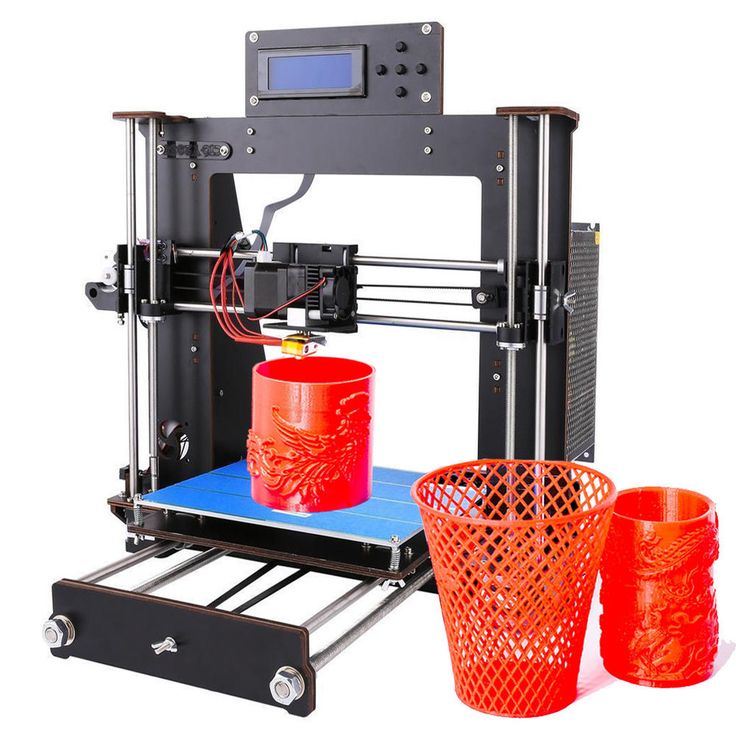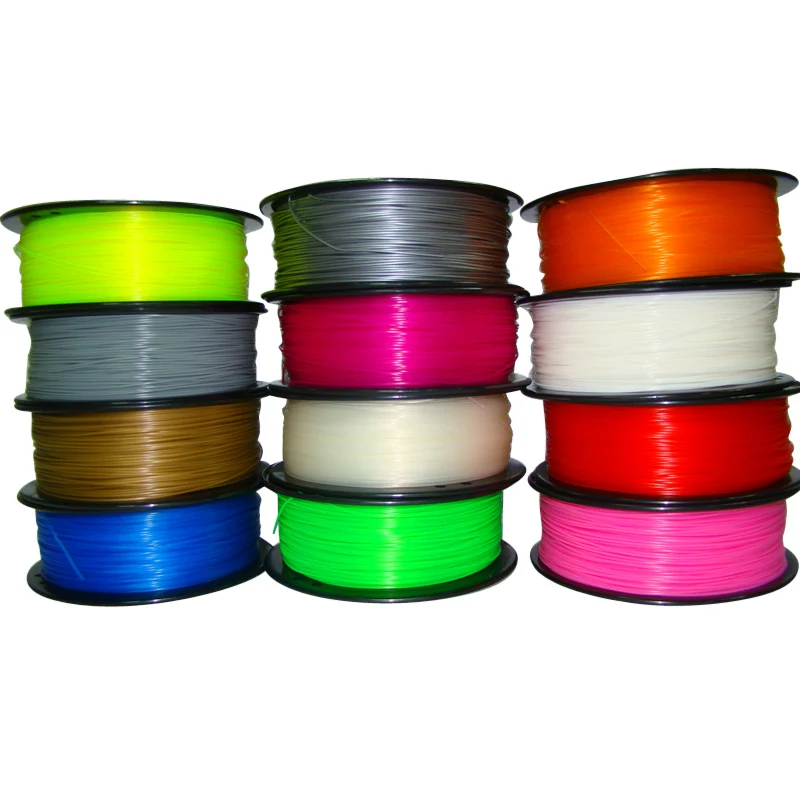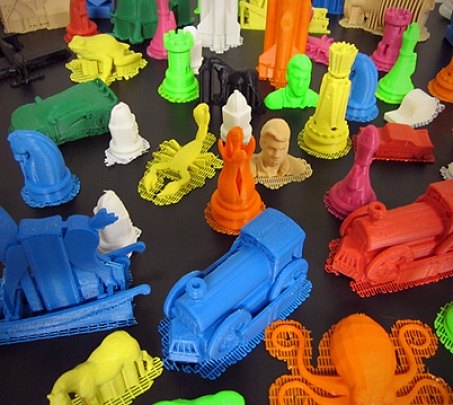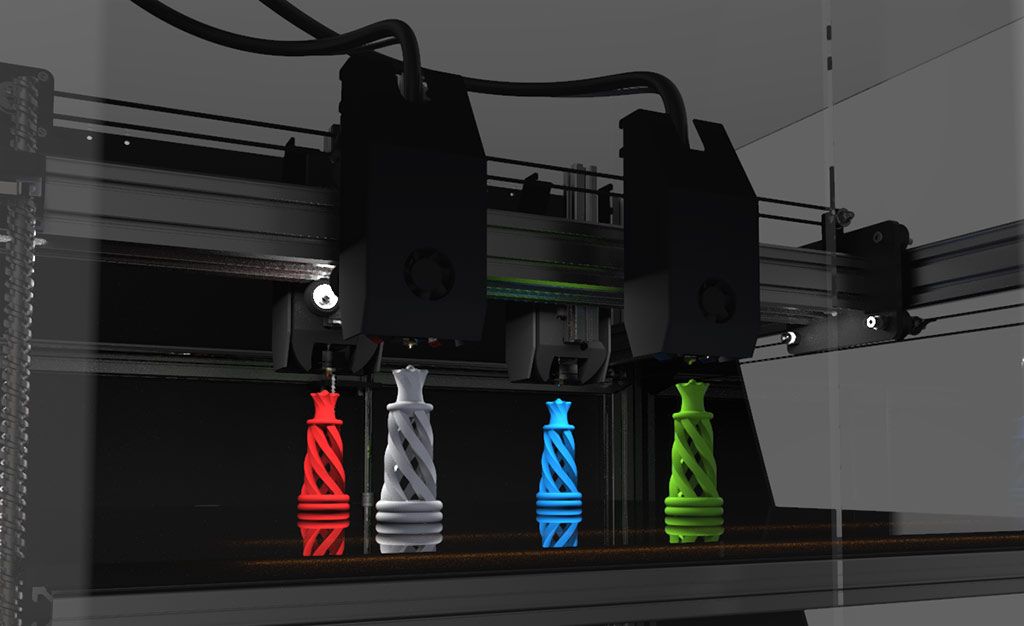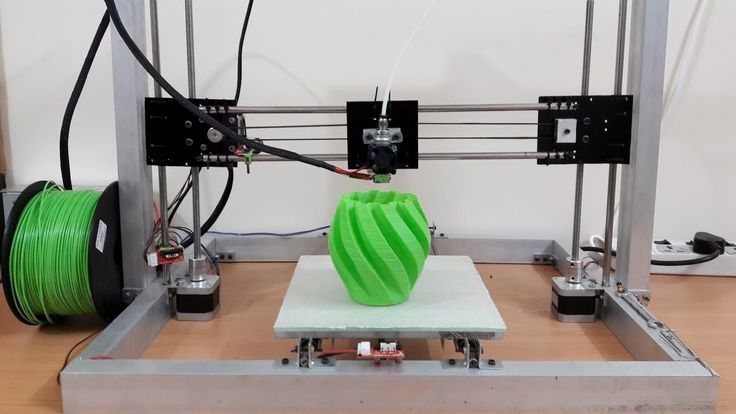When was a 3d printer invented
The complete history of 3D printing
Arun Chapman29 July 2022
Guide
While 3D printing is a relatively new technology, its history is deep, varied, and interesting – and, of course, still evolving. Here, we’ll take a brief look at the origins of the technology, its rise in popularity, and use, and what we believe the future holds for it.
Early 3D printing
The first 3D printers
The earliest 3D printer originated in 1981, when Dr. Hideo Kodama invented one of the first rapid prototyping machines that created parts layer by layer, using a resin that could be polymerized by UV light. In 1986, the first patent for stereolithography (SLA) was filed by Chuck Hull, who is considered “the inventor of 3D printing” for creating and commercializing both SLA and the .stl format – the most common file type used for 3D printing.
In 1988, Carl Deckard, a student at the University of Texas, licensed selective laser sintering (SLS) technology – another type of 3D printing that uses a laser to sinter powdered material into solid structures. Shortly after, in 1989, Scott Crump patented fused deposition modeling (FDM) – also known as fused filament fabrication (FFF) – and founded Stratasys, one of the main players in the 3D printing industry to this day. That same year, Hull’s company, 3D Systems Corporation, released the SLA-1 3D printer.
The 1990s – and the growth of the 3D printing industry
The 1990s saw a great deal of growth for the early 3D printing industry, with new companies founded and new additive manufacturing technologies being explored. It wasn’t until 2006, however, that the first SLS printer became commercially available.
The RepRap Project
2005 proved to be a landmark year for 3D printing technology, thanks to the rise of an open-source initiative called the RepRap Project, founded by Dr. Adrian Bowyer.
The initial goal of the project was to re-think additive manufacturing, starting with FDM/FFF, as a low-cost technology capable of self-replication. The result was a 3D printer called the RepRap, which became an inspiration for essentially every successful low-cost 3D printer from that point on.
The RepRap 3D printer is made of many plastic parts that can be printed by the RepRap itself. This means that any owner of a RepRap can print another 3D printer – hence “self-replicating” – along with other parts, tools, or designs.
The 2000s – open-source opens doors
Because it is open-source, thus making 3D printing technology accessible to virtually anyone with a computer, the RepRap was named the number-one “most significant 3D printed thing” by 3Dprint.com in 2017.
The success of the RepRap project was a catalyst for the rise of commercial 3D printers. Many of the patents filed in the 1980s regarding FDM also entered the public domain in 2006. This caused an even larger surge of 3D printing manufacturers into the market – one notable example being Makerbot, which was founded in 2009. Makerbot was a large force behind bringing 3D printing into the mainstream market, and opening the door for both professional and amateur users, or “makers.” The company sold open-source DIY kits that enabled customers to build their own 3D printers. Its online file repository, Thingiverse, also houses hundreds of thousands of free and paid downloadable 3D printing files. The site soon became the largest online community for 3D printing in the world.
Its online file repository, Thingiverse, also houses hundreds of thousands of free and paid downloadable 3D printing files. The site soon became the largest online community for 3D printing in the world.
The founding of Ultimaker
Ultimaker grew out of the Protospace FabLab in Utrecht, the Netherlands, in 2011. It started as a project between a few friends trying to make a 3D printer that would deliver accurate, useful parts without the costs and hassle that comes with larger industrial additive machines.
The inspiration for this came from the RepRap project. After many evenings spent building this “replicating rapid prototyper” – an open-source machine that could replicate most of its own components – they had a working 3D printer. But they noticed how much time and constant maintenance was required to keep it functioning properly, and began investigating design improvements that would make it even better. Over time, Ultimaker evolved, from DIY kits to a full ecosystem providing hardware, software, and materials fit for industrial environments.
3D printing today
Since the rise of commercial 3D printers, the landscape of the industry has changed quite drastically. Now, 3D printers – both desktop and otherwise – are used in industries and sections such as aerospace, architecture, manufacturing, automotive, healthcare, construction – and, of course, many more.
Examples of modern-day 3D printing
In 2018, for example, the International Space Station printed the first tool in space, using a low-gravity 3D printer. This enabled workers to access the tools they needed for maintenance far more quickly, rather than waiting for them to be delivered from Earth.
3D printing technology also enables organizations like Gerhard Schubert GmbH to transform the ways in which they operate, creating "digital warehouses" of parts and tools that can be printed on-demand by both manufacturing organizations themselves, as well as their customers.
3D printing materials of today
Additionally, manufacturers can make use of an ever-growing stable of 3D printing materials, which enable the creation of parts that are heat and chemical-resistant, flame-retardant, ESD-safe, and made of metal, carbon fiber, glass fiber, and more.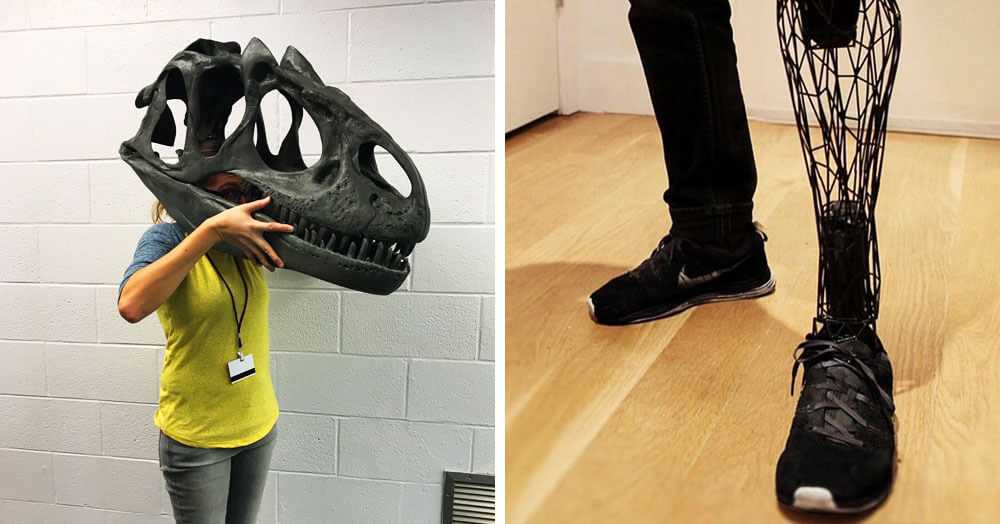 In 2015, Swedish company Cellink brought “bio-ink” to market, a seaweed-based material that can be used to print biological tissue – and potentially human organs. This is one of many use cases that 3D printing companies believe they can use to revolutionize various industries. This means the future of 3D printing holds a great deal of potential – a potential we’re excited to see realized.
In 2015, Swedish company Cellink brought “bio-ink” to market, a seaweed-based material that can be used to print biological tissue – and potentially human organs. This is one of many use cases that 3D printing companies believe they can use to revolutionize various industries. This means the future of 3D printing holds a great deal of potential – a potential we’re excited to see realized.
The future of 3D printing
Exactly what the future holds for 3D printing is fairly speculative, but adoption of consumer 3D printers will likely continue to accelerate. This will change the way the average person acquires goods, placing the means of manufacturing into their hands, whether they are printing prototypes, tools, or end-use parts. The technology’s acceleration will also serve to decentralize manufacturing as a whole – preventing supply chain issues, decreasing transportation and shipping costs, and drastically decreasing both time and money spent on acquiring goods.
The materials used in 3D printing will also continue to expand and evolve. The rise of printing metal, for example, is already unlocking applications and use cases previously thought impossible to achieve in ways other than traditional manufacturing methods. The use of metal in 3D printing will potentially see organizations using 3D printers for the serial production of metal parts – producing them faster and more cheaply than ever before.
The rise of printing metal, for example, is already unlocking applications and use cases previously thought impossible to achieve in ways other than traditional manufacturing methods. The use of metal in 3D printing will potentially see organizations using 3D printers for the serial production of metal parts – producing them faster and more cheaply than ever before.
3D printing by the (future) numbers
Other predictions focus on broader uses of 3D printing. In 2020, 3D printed molds and tools were valued at $5.2 billion – a number that is expected to grow to $21 billion by 2030. End-use parts, meanwhile, will increase in value seven times over, to $19 billion, by the same year. Such growth would mean even further transformation of the manufacturing industry, with organizations increasingly turning to in-house manufacturing rather than outsourcing.
Ready to learn more about the transformative power of 3D printing? Read a few of Ultimaker’s success stories to see how global organizations are leveraging the technology to achieve amazing things.
Read more
When Was 3D Printing Invented? The History of 3D Printing -
May 15, 2020
When you first heard the words “3D printing” did you imagine a super futuristic technology, like in the movies but, when was it really invented?
While the term 3D printing may sound like something you’d expect to hear in a science fiction novel, the history of 3D printing, also known as additive manufacturing, is longer than you might think.
Keep reading to learn about the history of 3D printing, and our BCN3D predictions on where we see this technology going in the future.
The History of 3D Printing in 3 PhasesThe 1980s: When Was 3D Printing Invented?The first documented iterations of 3D printing can be traced back to the early 1980s in Japan. In 1981, Hideo Kodama was trying to find a way to develop a rapid prototyping system. He came up with a layer-by-layer approach for manufacturing, using a photosensitive resin that was polymerized by UV light.
He came up with a layer-by-layer approach for manufacturing, using a photosensitive resin that was polymerized by UV light.
Although Kodama was unable to file the patent requirement of this technology, he is most often credited as being the first inventor of this manufacturing system, which is an early version of the modern SLA machine.
Across the world a few years later, a trio of French researchers was also seeking to create a rapid prototyping machine. Instead of resin, they sought to create a system that cured liquid monomers into solids by using a laser.
Similar to Kodama, they were unable to file a patent for this technology, but they are still credited with coming up with the system.
That same year, Charles Hull, filed the first patent for Stereolithography (SLA). An American furniture builder who was frustrated with not being able to easily create small custom parts, Hull developed a system for creating 3D models by curing photosensitive resin layer by layer.
In 1986 he submitted his patent application for the technology, and in 1988 he went on to found the 3D Systems Corporation. The first commercial SLA 3D printer, the SLA-1, was released by his company in 1988.
But SLA wasn’t the only additive manufacturing process being explored during this time.
In 1988, Carl Deckard at the University of Texas filed the patent for Selective Laser Sintering (SLS) technology. This system fused powders, instead of liquid, using a laser.
SLS fabrication machines in the Fundació CIM warehouseFused Deposition Modeling (FDM) was also patented around the same time by Scott Crump. FDM, also called Fused Filament Fabrication, differs from SLS and SLA in that rather than using light, the filament is directly extruded from a heated nozzle. FFF technology has gone on to become the most common form of 3D printing we see today.
These three technologies are not the only types of 3D printing methods that exist. But, they are the three that serve as the building blocks that would lay the groundwork for the technology to grow and for the industry to be disrupted.
But, they are the three that serve as the building blocks that would lay the groundwork for the technology to grow and for the industry to be disrupted.
In the 90s, many companies and startups began popping up and experimenting with the different additive manufacturing technologies. In 2006, the first commercially available SLS printer was released, changing the game in terms of creating on-demand manufacturing of industrial parts.
CAD tools also became more available at this time, allowing people to develop 3D models on their computers. This is one of the most important tools in the early stages of creating a 3D print.
During this time, the machines were very different from those that we use now. They were difficult to use, expensive, and many of the final prints required a lot of post-processing. But innovations were happening every day and discoveries, methods, and practices were being refined and invented.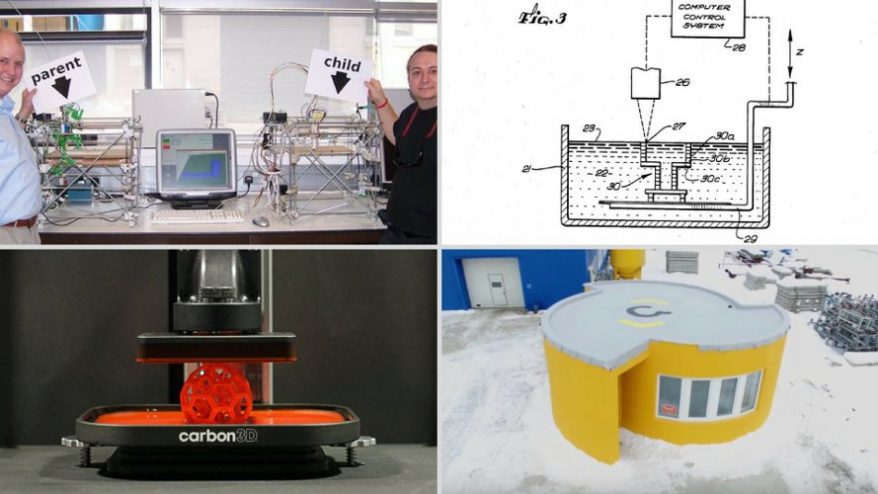
Then, in 2005, Open Source changed the game for 3D printing, giving people more access to this technology. Dr. Adrian Bowyer created the RepRap Project, which was an open-source initiative to create a 3D printer that could build another 3D printer, along with other 3D printed objects.
RepRapBCN in the middle of Fundacio CIM warehouse showing the RepRap Machines to visitors.In 2008, the first prosthetic leg was printed, propelling 3D printing into the spotlight and introducing the term to millions across the globe.
Then, in 2009, the FDM patents filed in the 80s fell into the public domain, altering the history of 3D printing and opening the door for innovation. Because the technology was now more available to new companies and competition, the prices of 3D printers began to decrease and 3D printing became more and more accessible.
3D Printing NowIn the 2010s, the prices of 3D printers started to decline, making them available to the general public.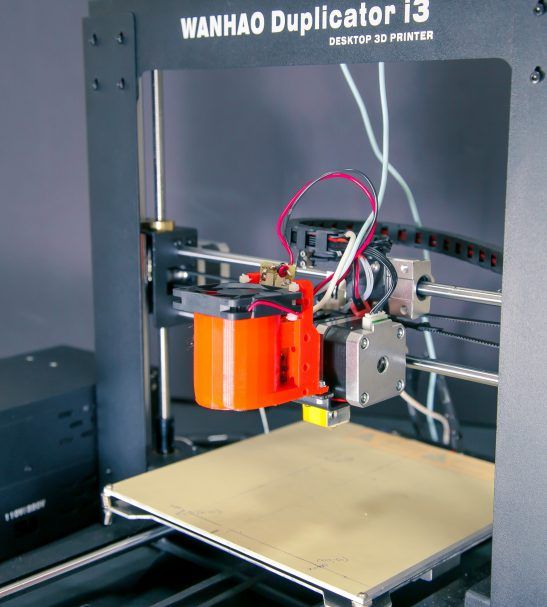 Along with the lowering prices, the quality and ease of printing also increased.
Along with the lowering prices, the quality and ease of printing also increased.
The materials that printers use have also evolved. Now there are a variety of plastics and filaments that are widely available. Materials like Carbon Fiber and Glass Fiber can also be 3D printed. Some creatives are even experimenting with printing materials like chocolate or pasta!
In 2019, the world’s largest functional 3D printed building was completed. 3D printing is now consistently used in developing hearing aids and other healthcare applications, and many industries and sectors have adopted the technology into their everyday workflow.
It’s safe to say that the history of 3D printing is still being written.
Innovations and ideas are created every day. We’re very excited to see what’s next!
History of 3D printing | iGo3D.ru
05.10.2022
Although 3D printing is a relatively new technology, its history is deep, varied and interesting - and, of course, continues to develop to this day. Let's take a look at the technology's origins, its growth in popularity and use, and what the future might hold.
Let's take a look at the technology's origins, its growth in popularity and use, and what the future might hold.
The first 3D printers
The 3D printer began in 1981 when Dr. Hideo Kodama invented one of the first rapid prototyping machines that built parts layer by layer using a resin cured by UV light. At 19In 1986, the first patent for stereolithography (SLA) was filed by Chuck Hull, who is considered the "inventor of 3D printing" for creating and commercializing SLA and the .stl format, the most common file type used for 3D printing.
In 1988, Carl Deckard, a student at the University of Texas, licensed selective laser sintering (SLS), another form of 3D printing that uses a laser to sinter powdered material into solid structures. Shortly thereafter, at 19In 89, Scott Crump patented Fused Deposition Modeling (FDM), also known as FFF, and founded Stratasys, one of the major players in the 3D printing industry to this day. That same year, Chuck Hull's company, 3D Systems Corporation, released the SLA-1 3D printer.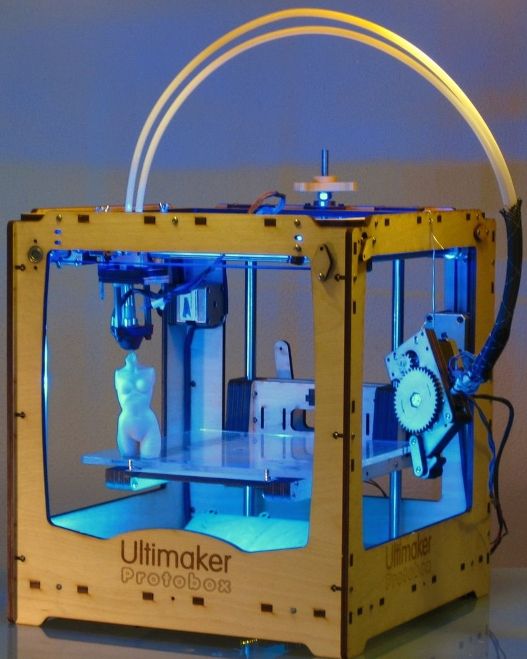
The 1990s: The growth of the 3D printing industry
The 1990s saw the rapid growth of the 3D printing industry, the founding of new companies and the exploration of new additive manufacturing technologies. However, it wasn't until 2006 that the first SLS 3D printer became commercially available. nine0003
The RepRap Project
The year 2005 marked a milestone for 3D printing technology with the emergence of an open source initiative called the RepRap Project founded by Dr. Adrian Bower.
The original goal of the project was to rethink additive manufacturing, starting with FDM/FFF, as a low cost technology that can replicate itself. The result was the RepRap 3D printer, which has been the inspiration for virtually every successful low-cost 3D printer since then. nine0003
The RepRap 3D printer consists of many plastic parts that can be printed by RepRap itself. This means that any RepRap owner can print another 3D printer - hence "self-replicating" - along with other parts, tools or designs.
2000s: Open Source Opens Its Doors
Thanks to open source, which makes 3D printing technology available to virtually every PC user, RepRap has been named "the most significant 3D printed thing" by 3Dprint.com in 2017. nine0003
The success of the RepRap project has catalyzed the growth of commercial 3D printers. Many of the patents filed in the 80s for FDM also went into the public domain in 2006. This caused an even greater tide of 3D printer manufacturers to enter the market - one notable example is Makerbot, founded in 2009. Makerbot has been instrumental in bringing 3D printing to the marketplace and has opened doors for both professional users and hobbyists, or "makers". The company sold open-source DIY (do-it-yourself) kits that allowed customers to build their own 3D printers. Its Thingiverse online file repository also hosts hundreds of thousands of free and paid 3D printing files. The site soon became the largest online 3D printing community in the world. nine0003
nine0003
Founding of Ultimaker
Ultimaker grew out of the Protospace FabLab in Utrecht, The Netherlands in 2011. It started as a project of a few friends trying to build a 3D printer that could produce accurate and useful parts without the expense and hassle of large industrial additive machines.
This was inspired by the RepRap project. After spending many evenings building an open source machine that could replicate most of its own components, they had a working 3D printer. But they noticed that it took too long to maintain it in working condition, and began to study design improvements that could make it better. Over time, Ultimaker has evolved from a DIY kit to a complete ecosystem providing hardware, software, and industrial-grade materials. nine0003
3D printing today
The industry has changed dramatically since the advent of commercial 3D printers. Now 3D printers are used in industries and sections such as aerospace, architecture, manufacturing, automotive, healthcare, construction and many others.
Examples of modern 3D printing
For example, in 2018, the International Space Station printed the first tool in space using a low-gravity 3D printer. This allowed the astronauts to access the tools needed for maintenance much faster, instead of waiting for them to be brought from Earth. nine0003
3D printing technology is also enabling many companies to change the way they work by creating "digital warehouses" of parts and tools that can be printed on demand by both manufacturers and their customers.
State-of-the-art 3D printing materials
In addition, manufacturers can use an ever-growing range of 3D printing materials that allow you to create parts that are resistant to high temperatures and chemicals, flame retardant, ESD safe, and metal , carbon fiber, glass fiber, etc. In 2015, Swedish company Cellink launched "bio-ink" - a seaweed-based material that could be used to print biological tissue - and eventually human organs. This is one of many use cases that 3D printing companies believe could lead to a revolution in various industries. This means that the future of 3D printing has huge potential - a potential that we look forward to realizing. nine0003
This is one of many use cases that 3D printing companies believe could lead to a revolution in various industries. This means that the future of 3D printing has huge potential - a potential that we look forward to realizing. nine0003
The future of 3D printing
What exactly the future holds for 3D printing is speculative enough, but adoption of consumer 3D printers is likely to continue to accelerate. It will change the way goods are purchased by providing the means of production, whether it be printing prototypes, tools, or end-use parts. Accelerating the development of technology will also serve to decentralize production in general - preventing problems with the supply chain, reducing transport and delivery costs, and dramatically reducing the time and money spent on acquiring goods. nine0003
Materials used in 3D printing will also continue to expand and develop. For example, the growth of metal printing is already opening up opportunities for applications and materials that were previously considered impossible with other traditional production methods.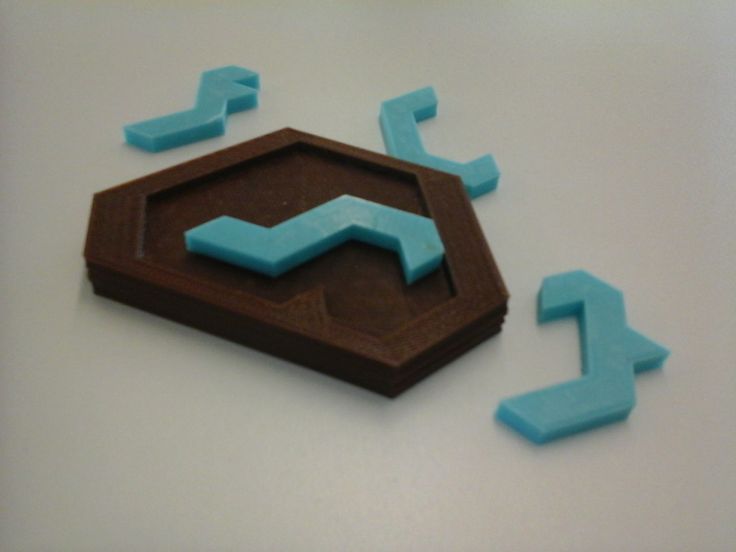 The use of metal in 3D printing could lead organizations to use 3D printers to mass-produce metal parts, making them faster and cheaper than ever before. nine0003
The use of metal in 3D printing could lead organizations to use 3D printers to mass-produce metal parts, making them faster and cheaper than ever before. nine0003
Check out the 3D printing success stories on our website to see how companies around the world are using the technology to achieve high-impact results.
Read
Previous article 3D printing to track oxygen levels at home Next article Advanced Prosthetics Made Affordable: How PSYONIC Developed a Bionic Arm Using Additive Manufacturing nine0000 History of 3D printing In this section, we wanted to trace the history of 3D printing from its inception to the present day, as well as give a forecast regarding the future development of technology.
The first 3d printer was invented by the American Charles Hull, he worked on the technology of stereolithography (SLA), a patent for the technology was issued in 1986. The printer was a fairly large industrial installation. The installation "grew" a three-dimensional model by applying a photopolymerizable material to a moving platform. The basis was a digital model pre-modeled on a computer (3D model). This 3d printer created three-dimensional objects, rising by 0.1-0.2 mm - the height of the layer. Despite the fact that the first device had many disadvantages, the technology has received its application. Charles Hull is also the co-founder of 3dsystems, one of the world's leading manufacturers of industrial 3D printers. nine0003
Charles Hull was not the only one to experiment with 3D printing technology, as in 1986 Carl Deckard invented Selective Laser Sintering (SLS). You can learn more about the method in another article, briefly: a laser beam sinters a powder (plastic, metal, etc.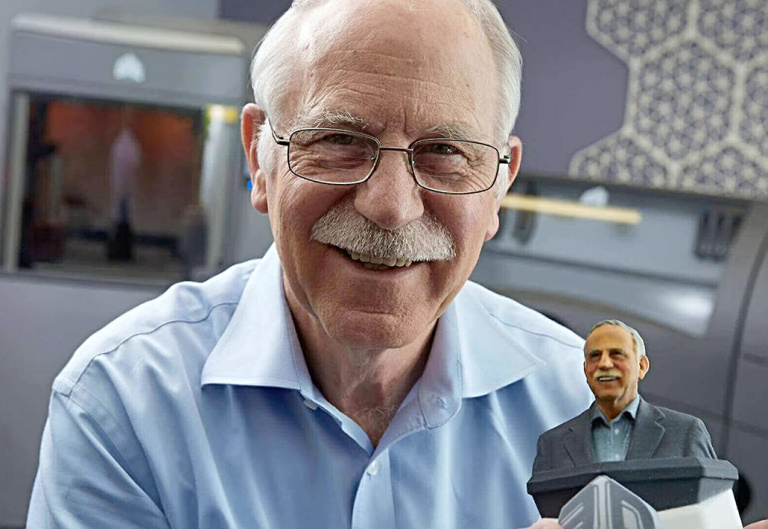 ), while the mass of the powder is heated in the working chamber to a temperature close to the melting point. The basis is also a digital model pre-modeled on a computer (3D model). After the laser passes through the horizontal layer, the chamber is lowered to the layer height (usually 0.1-0.2 mm), the powder mass is leveled with a special device and a new layer is applied. nine0003
), while the mass of the powder is heated in the working chamber to a temperature close to the melting point. The basis is also a digital model pre-modeled on a computer (3D model). After the laser passes through the horizontal layer, the chamber is lowered to the layer height (usually 0.1-0.2 mm), the powder mass is leveled with a special device and a new layer is applied. nine0003
However, the most famous and widespread 3D printing method today is layer-by-layer direction (FDM). The idea of technology belongs to Scott Crump (Scott Crump), the patent dates back to 1988. You can learn more about the method in another article, in short: material (usually plastic) is fed from the heated nozzle of the print head using a stepper motor, the print head moves on linear guides along 1 or two axes, and the platform moves along 1 or 2 axes . The basis of the movement is also a 3D model. The molten plastic is laid on the platform along the established contour, after which the head or platform is moved and a new layer is applied on top of the old one. Scott Crump is one of the founders of Stratasys, which is also one of the leaders in the production of industrial 3D printers. nine0003
Scott Crump is one of the founders of Stratasys, which is also one of the leaders in the production of industrial 3D printers. nine0003
All the devices described above belonged to the class of industrial devices and were quite expensive, so one of the first 3d Dimension printers from Stratasys in 1991 cost from 50 to 220 thousand US dollars (depending on the model and configuration). Printers based on the technologies described above cost even more and until very recently, only a narrow circle of interested specialists knew about these devices.
Everything began to change since 2006, when the RepRap project (from the English Replicating Rapid Prototyper - a self-replicating mechanism for rapid prototyping) was founded, with the goal of creating a self-copying device, which was a 3D printer working on technology FDM (layer by layer deposition). Only, unlike expensive industrial devices, it looked like a clumsy invention made from improvised means. Metal shafts serve as a frame, they also serve as guides for the print head. driven by simple stepper motors. The software is open source. Almost all connecting parts are printed from plastic on the 3D printer itself. This idea originated among English scientists and aimed at spreading available additive technologies so that users can download 3D models on the Internet and create the necessary products, thus minimizing the production chain. nine0003
driven by simple stepper motors. The software is open source. Almost all connecting parts are printed from plastic on the 3D printer itself. This idea originated among English scientists and aimed at spreading available additive technologies so that users can download 3D models on the Internet and create the necessary products, thus minimizing the production chain. nine0003
Leaving aside the ideological component, the community (which exists and develops to this day) managed to create a 3d printer accessible to the "ordinary person". So a set of unprinted parts can cost around a couple of hundred US dollars and a finished device from $500. And even though these devices looked unsightly and were significantly inferior in quality to their industrial counterparts, all this was an incredible impetus for the development of 3D printing technology.
As the RepRap project developed, 3D printers began to appear, taking as a basis the base laid down by the movement in technical and, sometimes, ideological terms (for example, commitment to the concept of open source - OpenSource).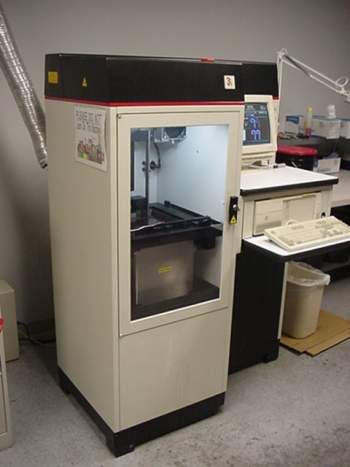 The companies that made printers tried to make them better both in terms of performance, design and user experience. The first RepRap printers cannot be called a commercial product, since it is not so easy to manage (and even more so to assemble) and it is not always possible to achieve stable work results. Nevertheless, companies tried to close the more than significant gap in quality, leaving a significant gap in cost whenever possible. nine0003
The companies that made printers tried to make them better both in terms of performance, design and user experience. The first RepRap printers cannot be called a commercial product, since it is not so easy to manage (and even more so to assemble) and it is not always possible to achieve stable work results. Nevertheless, companies tried to close the more than significant gap in quality, leaving a significant gap in cost whenever possible. nine0003
First of all, it is worth mentioning the MakerBot company, which started as a startup, took RepRap ideas as a basis and gradually turned them into a product of a new quality.
Their flagship product (and in our opinion the best to this day) remains the MakerBot Replicator 2 3D printer. The model was released in 2012 and later discontinued, but remains one of the most popular 3D printer models to this day " personal" segment (according to 3dhubs). The word "personal" is in brackets because this printer, which cost $2,200 at the time of release, was (and is) primarily used for business purposes, but falls into the personal segment due to its cost.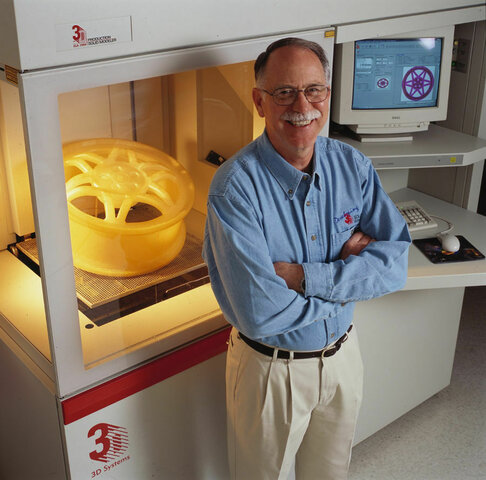 This model differs from its progenitors (RepRap), being, in fact, a finished commercial product. Manufacturers abandoned the concept of OpenSource, closing all sources and software codes. nine0003
This model differs from its progenitors (RepRap), being, in fact, a finished commercial product. Manufacturers abandoned the concept of OpenSource, closing all sources and software codes. nine0003
In parallel with the release of equipment, the company actively developed the Thingiverse resource, which contains many models for 3d printing, available for download for free. During the development of the first printer and beyond, the community has helped the company a lot, testing the product and offering various upgrades. After the release of the Replicator 2 (and the closure of development), the situation has changed. You can learn more about the history of MakerBot and other companies and people associated with 3d printing by watching the film Print the legend. nine0003
This film also highlights the history of Formlabs, one of the first companies to launch an affordable 3D printer based on SLA (Strereolithography) technology. The company raised funds for the first FORM 1 model through crowdfunding, encountered production difficulties, but eventually released an affordable and productive 3D printer, closing the quality gap described above.
And although the 3D printers described above were far from perfect, they laid the foundation for the development of affordable 3D printing technology, which continues to this day. At the moment, the quality of FDM and SLA printers is increasing, but there is no significant price reduction, rather, on the contrary, it is growing slightly. Along with FDM and SLA, many companies are developing in the field of powder sintering (SLS), as well as metal printing. Despite the fact that such printers cannot be called affordable, their price is much lower in comparison with analogues from the professional segment. It is also worth noting the development of the line of materials, in addition to the standard ABS and PLA plastics, today many different materials are used, including nylon, carbon fiber and other durable and refractory materials. nine0003
Personal 3d printers of today are very close to professional devices, the development of which also does not stop. In addition to the "founders" of the technology (Stratasys, 3dsystems), many small companies specializing in industrial 3D printing technologies (metal in particular) have emerged. 3D printing is also attracting the attention of large corporations, which, with varying degrees of success, are striving to take their place in a growing market. Here it is worth highlighting HP, which recently released the HP Jet Fusion 3D 4200 model, which has gained popularity among 3d printing professionals (as of 2018, it is at the top of the ranking of professional 3D printers in the quarterly reports of the 3dhubs portal). nine0003
3D printing is also attracting the attention of large corporations, which, with varying degrees of success, are striving to take their place in a growing market. Here it is worth highlighting HP, which recently released the HP Jet Fusion 3D 4200 model, which has gained popularity among 3d printing professionals (as of 2018, it is at the top of the ranking of professional 3D printers in the quarterly reports of the 3dhubs portal). nine0003
However, 3D printing technologies are developing not only in breadth, but also in depth. One of the main disadvantages of 3D printing, compared to other production methods, is the low speed of creating models. A significant advance in terms of accelerating 3D printing was the invention of CLIP technology by CARBON, printers operating on this technology can produce models 100 times faster than classic SLA technology.
There is also a constant expansion of the range, properties and quality of materials and post-processing of products. All this accelerates the transition to the use of 3d printers in production, and not just as prototyping devices. Today, many large and not only companies and organizations are closely using a 3D printer in their production chain: from consumer goods manufacturers NIKE and PUMA to BOEING and SPACE X (the latter prints engine parts for its rockets that could not be made in any other way) . nine0003
All this accelerates the transition to the use of 3d printers in production, and not just as prototyping devices. Today, many large and not only companies and organizations are closely using a 3D printer in their production chain: from consumer goods manufacturers NIKE and PUMA to BOEING and SPACE X (the latter prints engine parts for its rockets that could not be made in any other way) . nine0003
In addition to the "classic" scope of 3D printing, today more and more often you can see news about how a house or some organ (or rather, a small part of it) was printed on a 3D printer from bio-material. And this is true, several companies around the world are testing or already partially using 3D printing in the construction of buildings and structures. This mainly concerns the contour pouring of walls (similar to the FDM method) with a special composite concrete mixture. And in Amsterdam there is a 3D printed bridge project and this list will only expand over time, since the use of 3D printing in construction can significantly reduce costs and increase the speed of work at certain stages. nine0093 With regards to medicine, here 3D printing also finds application, but at the moment it is not printing organs, but rather the use of technology in prosthetics (of various kinds) and bone replacement. Also, 3D printing technology is widely used in dentistry (SLA technology). Regarding the printing of organs, this is still far in the future, at the moment bio-3D printers are experimental facilities in the early stages, the success of which is limited to printing a few limited-viable cells. nine0003
nine0093 With regards to medicine, here 3D printing also finds application, but at the moment it is not printing organs, but rather the use of technology in prosthetics (of various kinds) and bone replacement. Also, 3D printing technology is widely used in dentistry (SLA technology). Regarding the printing of organs, this is still far in the future, at the moment bio-3D printers are experimental facilities in the early stages, the success of which is limited to printing a few limited-viable cells. nine0003
Looking to the future, it is safe to say that 3D printing technology will expand both in breadth and depth, improving technology, speeding up processes, improving quality and improving material properties. 3D printers will increasingly replace old methods in production chains of various scales, and world production, due to this, will move towards the “on demand” scheme of work, increasing the degree of product customization. Perhaps someday, 3D printers will be widely used at the household level for the production of necessary things (the dream and goal of the RepRap movement), but this requires not only the development of technology, but also a paradigm shift in social thinking, as well as the development of a powerful design ecosystem ( 3d modeling) products (which is often forgotten).




